Steam Deck Review: One Year Of Handheld PC Gaming
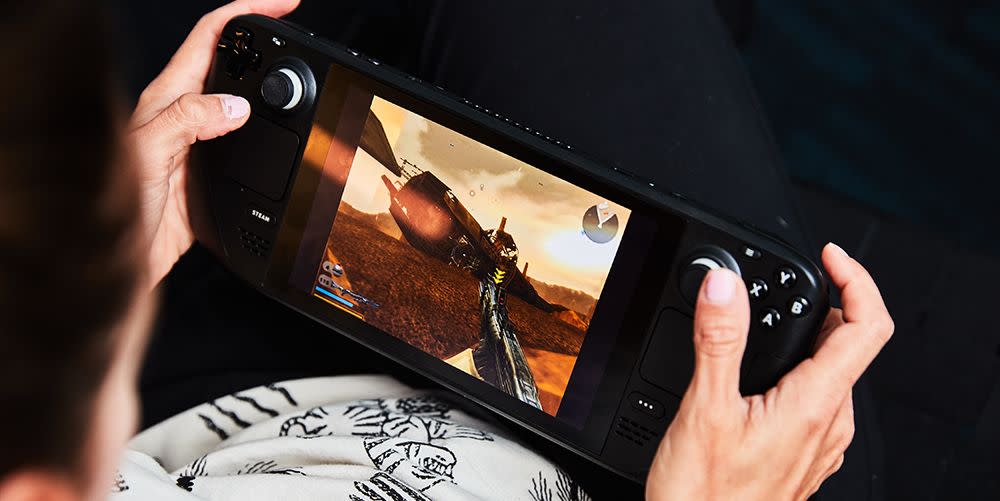
Valve’s Steam Deck released exactly one year ago today. In that time, this portable gaming computer has seen major monthly upgrades that bring new interface tweaks and features. From its massive game library to its impressive performance, this little PC has only gotten better with age.
Steam Deck condenses an entire gaming computer setup into a portable device—complete with a built-in controller and an 800p LCD touchscreen. At $399, this handheld costs half the price of a comparable desktop PC build and weighs just over a pound. This makes it easy to hold for hours on end and untethers the PC gaming experience from your desk. Just don’t mistake the Steam Deck for a game console. This system places all the benefits of a computer such as a desktop operating system, mod support, and highly adjustable graphics settings in your pocket. Plus it has enough power to run the latest triple-A titles smoothly at up to 60 frames per second.
The Steam Deck’s USB-C charging port supports a dock mode when connected to a USB-C hub so you can play on a larger TV or gaming monitor up to a 4K resolution at 120 FPS while you’re home. If you’re really determined, you can even connect accessories like your mouse and keyboard to a dock’s additional USB ports to use it as a traditional Linux or Windows desktop. This additional functionality opens the door for computing tasks like editing photos or browsing the web. When it’s time to go out, simply unplug the Steam Deck and pick up where you left off. This versatility has earned the Steam Deck a spot in my everyday carry. Read on to see how well it fares past the honeymoon phase.
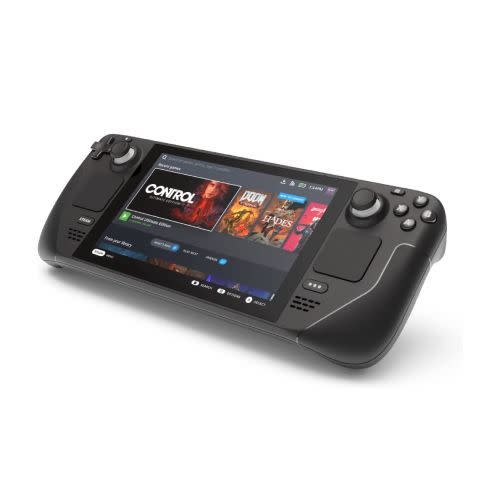
Steam Deck (64GB)
$399.99
steampowered.com
Steam Deck Changes The Way You Game
Before the Steam Deck, you would traditionally buy either a home video game console or a heavy (30 pounds on average) desktop gaming computer tower in order to play the newest games at their highest graphic fidelity. The components powering these systems are expensive, bulky, and power hungry. That means you’re glued to either your office chair or living room couch while you play games. Console manufacturers have long offered portable consoles such as Sony’s PlayStation Portable to play games on the go. The weaker mobile hardware on those gadgets couldn’t achieve full-on performance parity—meaning a new blockbuster release like the latest Call of Duty was only available on home systems. Portable systems often got spin-off versions of flagship titles or different games entirely, which looked and played nothing like what you got at home.
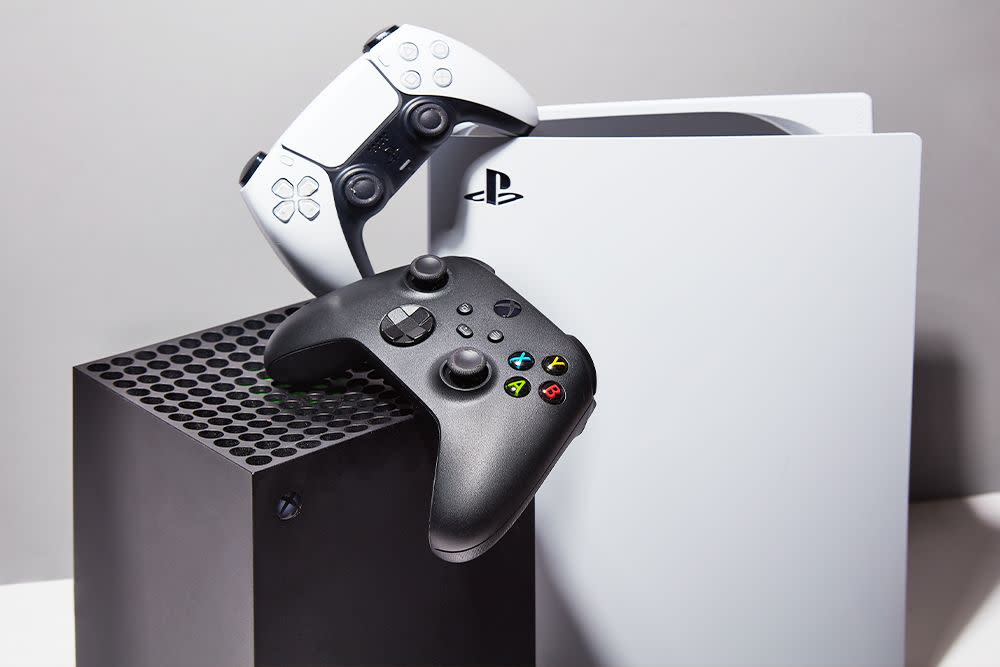
In 2017 Nintendo tried to bridge the gap between home and portable game systems with a single 2-in-1 game console, the Switch. This hybrid tablet lets you pick up and play a game on your TV at home and on the tablet’s 7-inch screen on the go. Unfortunately its mobile chip (the Nvidia Tegra X1) lacks the power to natively play new AAA games such as Control or any of the Resident Evil remakes. And when ports of popular games like the Witcher III finally make their way to the Switch years after their initial release, the experience is often drastically scaled down to a shell of its original release.
Consoles have recently shifted to cloud gaming so that players can stream their console games remotely to a phone or laptop. While this works well enough, cloud gaming is laggier and graphically inferior due to bandwidth needs. Worst of all, you can’t even play your games if you don’t have a Wi-Fi or cellular data connection. These scenarios, like when I’m trying to kill time while I travel on a plane or train, are exactly when I reach for a portable system the most.
Portable PCs on the other hand have fared much better in the form of bulky, but truly mobile gaming laptops. These pricey computers pack desktop-adjacent components that are powerful enough to natively play the latest 3D PC games like Cyberpunk 2077 or Red Dead Redemption II from anywhere. Their larger shells are necessary to house hardware like processors, graphics cards, and huge screens. Gaming laptops offer a similar performance to desktops when plugged into an outlet, but their power takes a hit and the batteries die quickly when disconnected from chargers. On top of that, they’re heavy (5+ pounds) and tend to run extremely hot and loud.
Up until last year, most people were okay spending well over $1,000 on gaming laptops like these despite their limitations. I know this because I’m one of them. I’ve been using an aging MSI laptop for portable gaming and video editing for the past few years. With that said it barely lasts longer than an hour from a full charge.
These days my Steam Deck puts the latest game releases, complete with PC features like customizable button mapping and game modifications, right in my hands. It lasts up to eight hours when I play less demanding indie games, and a bit over two hours when I play AAA titles at their highest settings. That’s a hell of a lot longer than the single hour I get from my gaming laptop. And with extensive control over power usage and frame rate I can dial back the graphics and set it to 30 FPS to run the newest games for even longer without so much as a stutter.
Gaming performance of this caliber has never been this cheap, nor has it been this versatile—with 2-in-1 desktop and mobile functionality squeezed into a handheld. The Steam Deck has arrived at the perfect time as Sony and Microsoft have begun to release their console-exclusive games to PC. This means you no longer have to buy a PlayStation to experience God of War or an Xbox to play Halo and the Forza racing series—all of the newest first-party console games are available on the Deck. That’s in addition to a decades-old computer game library and PC exclusives. And with hardware powerful enough to emulate almost every game console ever made from the Atari 2600 to the Nintendo Switch, the Steam Deck is the ultimate all-in-one game system.
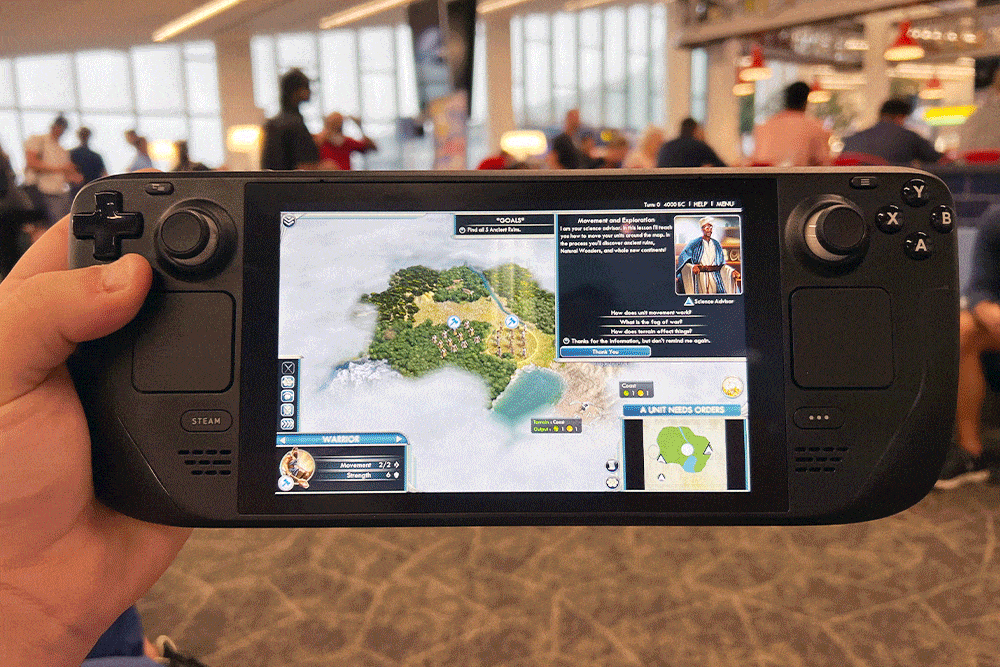
All-in-One Component Advantage
The secret behind this high level of performance and extensive battery life is the Steam Deck’s Accelerated Processing Unit (APU). Nicknamed Van Gogh, this microprocessor chip was developed by Valve in partnership with semiconductor company AMD. It combines and condenses the traditionally sizable graphics card and processor components into a single 7 nanometer square.
This tiny chip is a fraction of the size and uses significantly less energy. Even so, it’s rated at 1.6 Teraflops, capable of running older games up to 4K 120 FPS when docked to a larger screen. That’s also plenty enough to play the newest triple-A releases today at 720p on medium settings at 60 FPS on the Steam Deck itself. Since the APU utilizes the same RDNA 2 architecture used by the current generation of consoles, it has no problem playing upcoming games like Hogwarts Legacy.
Granted, this little component is no match for a desktop powered by a higher end graphics card like a 3090 Ti. But its ability to pump out graphics well over medium presets is seriously impressive. And its top-level integration streamlines your control over the entire system: You can adjust everything from fan speeds to wattage usage in order to extend battery life at the cost of performance.
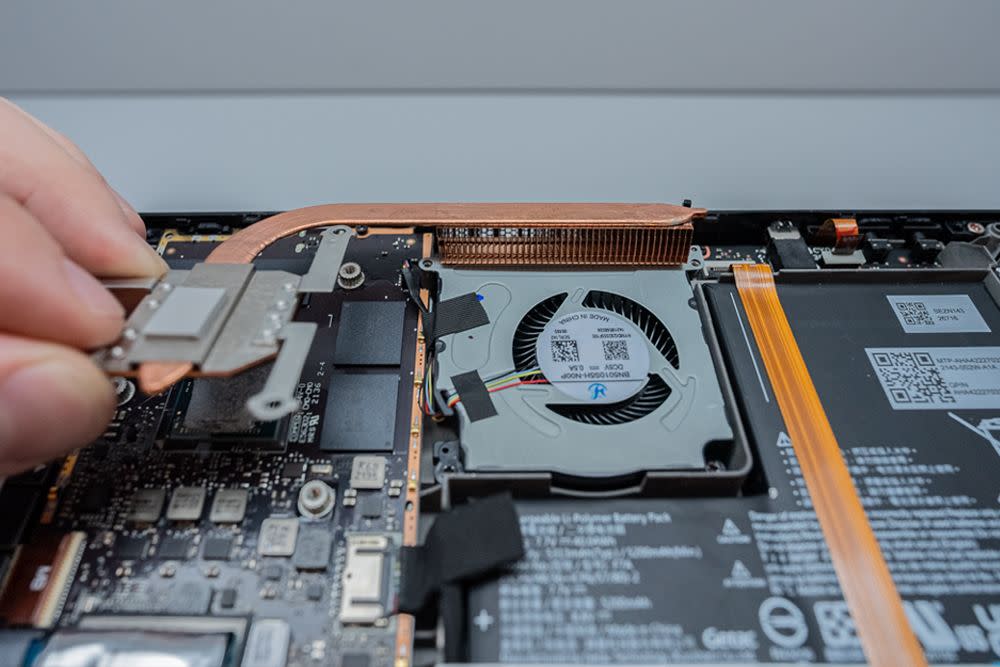
Crack open the Steam Deck and you’ll find neatly organized internals, so it’s easy to upgrade memory and make repairs. There’s plenty of breathing room despite the fact that the APU takes up minimal space and produces less heat. Valve’s thermal management uses software to monitor the hardware and cool sections by specific amounts to keep performance from throttling. This prevents lag and lost frames in games without obnoxiously loud fan noise. While the Steam Deck is nearly a jack of all trades it does have to cut cost somewhere to hit its price point.
Suboptimal Screen
The Deck’s 7-inch 1280x800 IPS display is plenty large to maximize immersion. Its bezels are a bit thick for my liking, but are not distracting once you start playing. The extra screen real estate makes it easier to see objects and read text in digital worlds than it is on my Switch or aging PlayStation Vita. While its 800p screen sounds weak on paper, that’s not the issue; it’s difficult to tell the difference between resolutions on smaller screens. Instead, it’s the LCD panel which struggles with color reproduction.

The Deck’s LCD panel looks washed out when compared to an OLED. The vibrant colors and true blacks of an OLED screen make all scenes looks richer, but truly excels in dark scenes where the Deck’s LCD struggles. Even the decade old PlayStation Vita’s OLED screen bested the Steam Deck in various indie games we ran side-by-side. In the Hotline Miami shot above, look at the fiery yellow hue on the Vita versus the almost white yellow hue on the Deck. This shows the wider color range of OLED technology. Meanwhile the OLED panel’s ability to turn off individual pixels to create true blacks results in better dark scenes and color contrast. In fact you can see how the Deck’s LCD backlighting illuminates the black areas and makes them look light grey which is distracting in dark scenes. Lastly details clearly pop from the PlayStation Vita’s smaller screen which looks superior to the LCD.
Yes, the Steam Deck has a larger screen. But I’m a firm believer that the size of the screen doesn’t matter as much as how you use it. In this case, both 2D and 3D games would have more oomph on an OLED panel. Realistically most people aren’t going to be comparing an OLED screen side-by-side with their Deck while they play. On top of that you would have to be a screen snob to really notice the LCD’s weak points. But for a device primarily meant to be played as a portable, this is a noticeable misstep that becomes glaring in games with dark scenes, like horror or stealth action games.
SteamOS Software Is Constantly Evolving
Steam Deck’s greatest achievement is its simplification of PC gaming. The device runs an easy-to-use operating system called SteamOS 3. This OS is visual heavy with a focus on game box art and streamlined menus similar to those you would find on a traditional game console. You can switch between tabs to see your library of owned games, friend activity, and the digital storefront to buy new titles. When you launch into a game your graphics settings are already optimized to the hardware, so you can just start playing without fiddling with settings like you would on console. And because AMD hardware powers the Steam Deck, it can utilize AMD’s FidelityFX Super Resolution technology which runs games at a lower resolution, then upscales and optimizes details to boost frame rates.
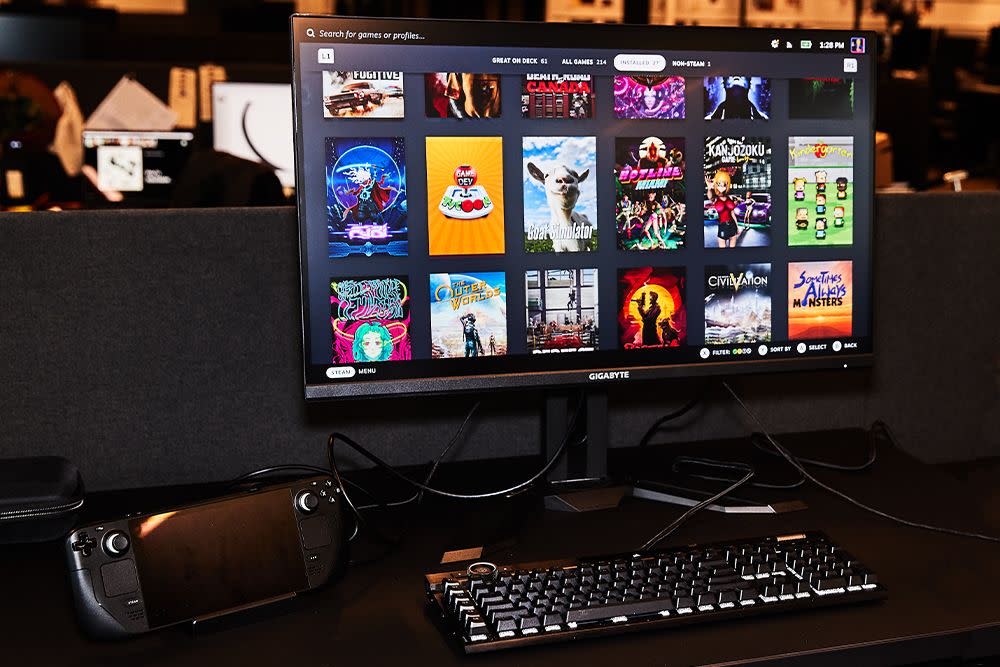
SteamOS is not only accessible, but constantly getting major updates unlike a traditional game system. Some of these crucial updates include memorizing individual game performance profiles, local network game transfers, and a revamped desktop dock mode. Other updates optimize battery usage and frame rates to make it even better. These functionality boosts may not have shipped with the device, but they open up the door for advanced capabilities like installing Windows 11. Since SteamOS runs atop a full Linux build, you can switch over to an included desktop mode. Here you can use the browser to download full apps like OBS for live-streaming, Famistudio for making music, and DarkTable for photo editing. Or you can install Windows for even more possibilities, such as downloading games and apps that aren’t on Steam (like Xbox Game Pass).
Another advantage of Steam Deck is its PC-style software customization for those into extensive tweaking. This gives you the freedom to download plug-ins to modify how you use the Deck. Remember how colors on a LCD aren’t as vibrant as an OLED? I’ve installed a plugin called vibrantDeck to boost saturation and help colors look richer. And if you really want to play games not verified by the Deck you can use Windows to play games like World of Warcraft or Overwatch 2 from Battlenet. Consoles are restricted from this level of modification. After a year I’m spending more time playing PC games than ever, and barely touch my main rig at all except for playing some VR games that rely on its more powerful hardware.
Steam Deck Is The Hybrid Future Of PC Gaming
Although the Steam Deck looks massive at first glance, especially side-by-side with a console like the Switch, the ergonomics are some of the comfiest found on any handheld. It took a few days to get used to the 1.5 pound weight—twice as heavy as Switch or Vita. However the curved handles are easy to wrap your hands around and my fingers naturally rest on the triggers. Meanwhile all of the buttons are perfectly clicky with a travel that isn’t too shallow. It’s hard to walk the line between satisfying and responsive, but the Steam Deck’s controller feels good to use without any strain. While I don’t use the back paddles as much as I should, these extra inputs are convenient to have for mapping quick actions like reloads and dodges. Over the past year I’ve used the Steam Deck at least three times a week. My personal rig and consoles are lucky to see me hop on just once in the same time frame.
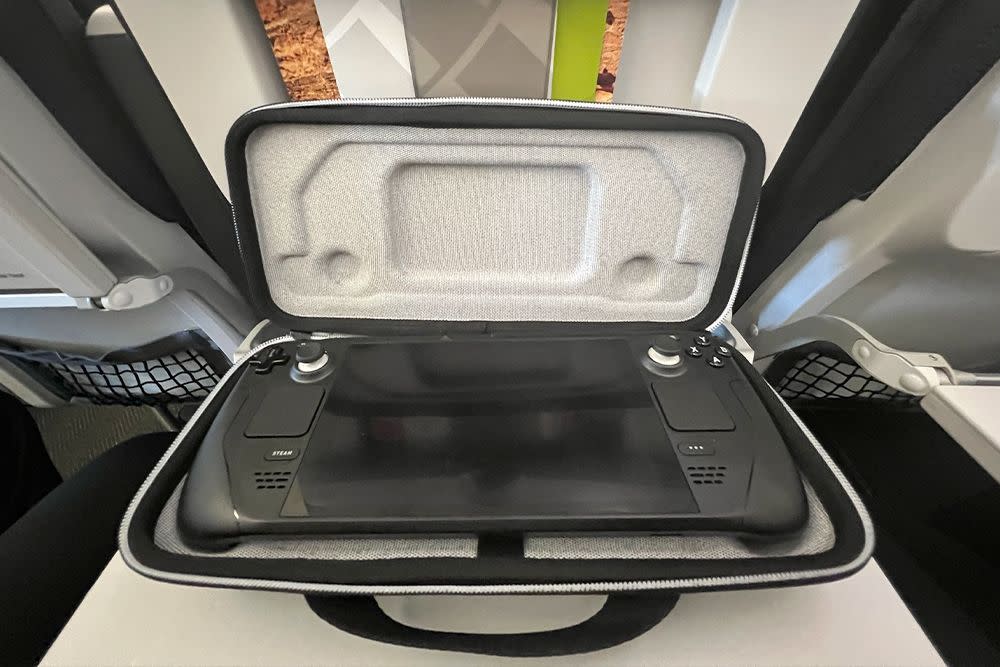
This all boils down to smart design and convenience. Its lightweight body may be 11-inches long but its easy to pick up or throw into a backpack. After a long day of work, the last thing I want to do is look at my monitor or TV. The freedom to play my Deck out on my balcony or from my bed means I get those extra runs in. Its decently long battery life has survived flights, train rides, and hotel stays. Even in more everyday scenarios like waiting to pick up my fiancé from the bus station, I can squeeze in a few minutes of Vampire Survivors rather than waste time on my phone. And because I’m making progress in my games I’m motivated to work my way through my ever expanding backlog.
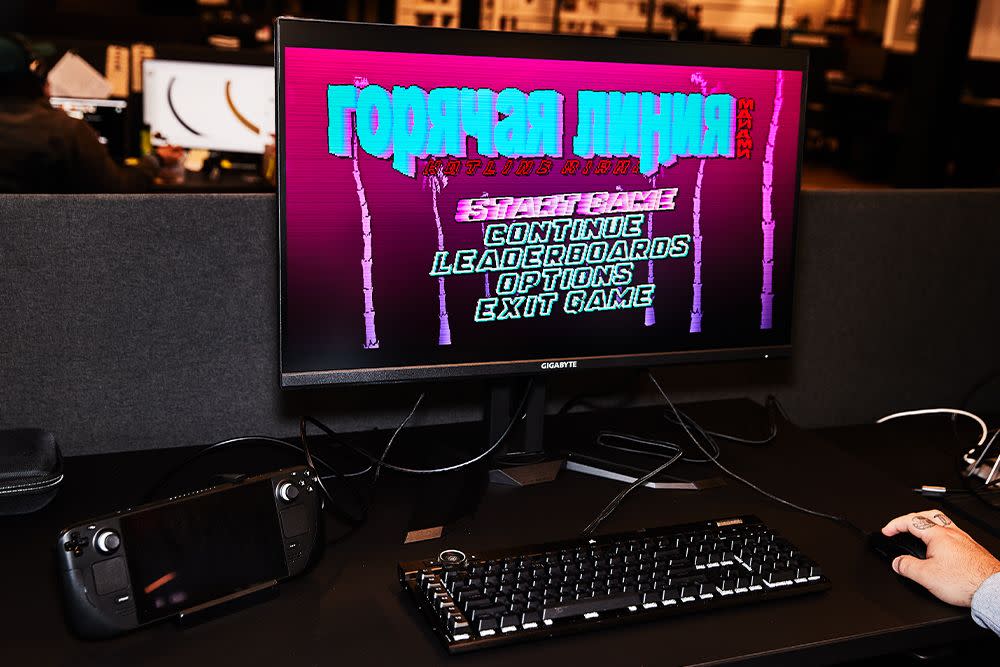
This ease-of-use gives Steam Deck a leg up on PC, with its suspend feature being the biggest advantage. This lets me chip away at side missions while cooking dinner or traveling, then put my Deck to sleep on the fly. Later, I can pick up where I left off without loading up a save. Even hardcore PC gaming enthusiasts with beastly rigs could benefit from the extra game time the Steam Deck gives you. You can grind in MMOs, rank up in shooters, and move the story along in single-player games, then return to the game on your main computer for the important stuff. Even mouse and keyboard-centric titles without native controller support translate well to Steam Deck thanks to community made layouts. Of course you can also spend time customizing the controls yourself.
Let me be clear: the Steam Deck is not a console killer for someone who obsesses over eye candy. But its additional usefulness as a computer, larger library, and handheld design that can be taken anywhere has left my Xbox Series X and PS5 collecting dust. I’m perfectly okay trading off reflections and ray-tracing in games to play them while away from my desk or couch. And on the smaller screen I find that I’m not the graphics snob I usually am on PC. I can play at medium settings with a frame rate capped to 60 FPS without a care in the world.
The Verdict
Sure the Steam Deck has some areas where it could improve in its next iteration, namely the screen and the 2.5 hours of battery life when playing games at their highest fidelity. But the fact is that this hardware is surprisingly future-proofed, even a year out from its debut, bodes well for its longevity. I find myself surprised by how well it runs demanding 3D games that just came out last week when its APU has been around for quite some time. With these next generation games running at medium to high settings well above 30 FPS, I’m optimistic that this first batch of Steam Decks will endure the next few years of AAA releases. And its hardware’s lifespan will be much longer for playing less demanding indie games.
With most gadgets, your usage often dwindles over time. The constant updates make the experience even more enjoyable and the growing list of games keep me coming back for more. Since it can play every third party game and system exclusives, I have an almost limitless backlog to work through.
This is the best gaming invention of the 21st century in terms of ergonomics, power, and functionality for the price. Sure you sacrifice High Dynamic Range and ray tracing, but you gain a plug-and-play handheld that shifts the newest games between the big screen and your pocket so you can enjoy more playtime wherever you are.
You Might Also Like
